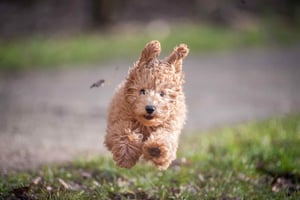Potty training a puppy can be a daunting task, but it doesn't have to be. With the right techniques...
Good Pup Training: A Comprehensive Guide to Raising a Well-Behaved Dog
Training your pup can be a daunting task, but it doesn’t have to be! With the right knowledge and techniques, you can easily teach your pup good behavior. This guide provides a comprehensive overview of good pup training, including tips on how to get started, basic commands and cues, and how to deal with common issues. With this guide, you’ll be able to raise a well-behaved pup in no time!
Getting Started with Good Pup Training
The first step in good pup training is to get your pup used to the idea of being trained. Start by introducing basic commands like “sit”, “stay”, and “come”. Make sure to reward your pup with treats and praise when they follow your commands. The key to successful pup training is consistency, so be sure to practice these commands regularly.
Another important step in pup training is to establish yourself as the leader of the pack. Be firm and consistent with your pup, and make sure they understand that you’re the one in charge. Establishing yourself as the leader will help your pup understand your commands and trust you.
Basic Commands and Cues
Once your pup is comfortable with the idea of being trained, it’s time to start teaching them basic commands and cues. Start with the basics like “sit”, “stay”, and “come”. As your pup gets more comfortable with commands, you can move on to more complex ones like “down” and “roll over”. As your pup masters each command, be sure to reward them with treats and praise.
It’s also important to teach your pup basic cues like “no”, “stop”, and “leave it”. These cues are essential for teaching your pup to behave in public and around other animals. Be sure to practice these cues regularly, and reward your pup with treats and praise when they respond correctly.
Dealing with Common Issues
While pup training can be a rewarding experience, it can also be challenging. Here are some common issues you may encounter and tips on how to deal with them:
- Biting: If your pup is biting, it’s important to let them know that it’s unacceptable. Whenever your pup bites, firmly say “no” and stop playing with them. You can also offer them a chew toy as an alternative.
- Jumping: If your pup is jumping, it’s important to ignore them. Whenever your pup jumps, turn away and don’t make eye contact. Once they’ve stopped jumping, reward them with a treat and praise.
- Pulling: If your pup is pulling on the leash, it’s important to remain calm. Whenever your pup pulls, stop walking and wait until they stop pulling. Once they’ve stopped, reward them with a treat and praise.
- Barking: If your pup is barking, it’s important to remain calm. Whenever your pup barks, firmly say “no” and ignore them. Once they’ve stopped barking, reward them with a treat and praise.
Dealing with common issues can be challenging, but with patience and consistency, you can teach your pup how to behave properly. Remember to reward your pup with treats and praise when they behave correctly, and be sure to practice regularly.
Conclusion
With the right knowledge and techniques, good pup training doesn’t have to be a daunting task. This guide provides a comprehensive overview of good pup training, including tips on how to get started, basic commands and cues, and how to deal with common issues. With this guide, you’ll be able to raise a well-behaved pup in no time!



